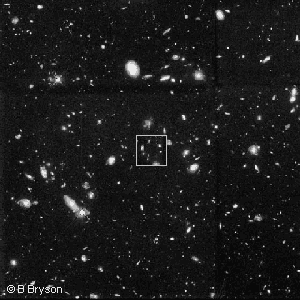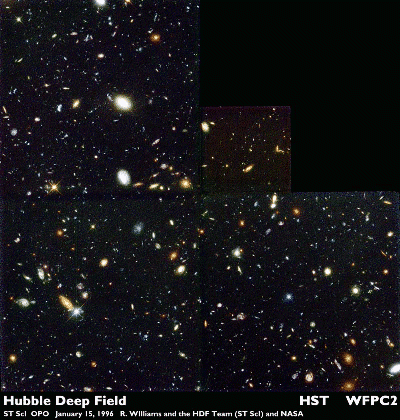More at 1 yottameter
This is the original Hubble deep sky mosaic. Just another of the incredible images returned by the Hubble space telescope over the last few years. To obtain this image, the telescope was pointed to a spot of sky near the celestial north pole that contains few close stars or nearby galaxies. Then the shutter was opened for several hours for each section of the mosaic. The area of sky covered by the composite photo is that of a grain of sand held at arm's length! Other than the lack of local stars and galaxies, it is believed to be fairly typical of the universe as a whole. Almost every object in this image is a separate galaxy containing thousands of millions of stars. Visit the Hubble Telescope site to see more amazing pictures taken from Earth orbit. The Puzzle of the Missing MassOne of the persistent problems in cosmology is variously called the problem of the missing mass or the dark matter hypothesis. Essentially, the problem arises because of the observation of huge clusters of galaxies and the estimates for the age of the universe. Using the Coma cluster as an example, astronomers have been able to estimate the visible mass and velocity of the galaxies that make up the Coma cluster and, based on the age of the universe, the individual galaxies should have enough velocity to have left the cluster hundreds of millions of years ago. The observed fact that the cluster still exists requires that there be more mass in the cluster than is visible by electromagnetic radiation at all frequencies. In fact, the visible galaxies of the Coma cluster, and others that have been studied, contain only about 10% of the mass required to maintain the clusters for the known age of the universe. The search for the missing mass, the hypothesized dark matter, is ongoing. |

